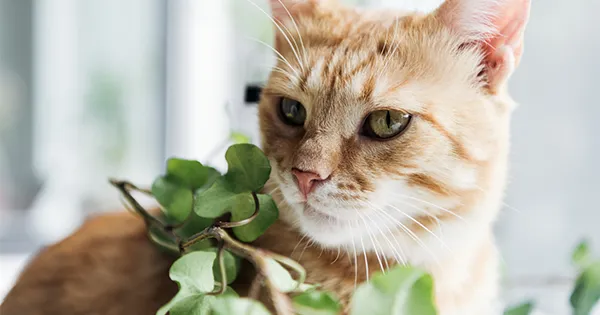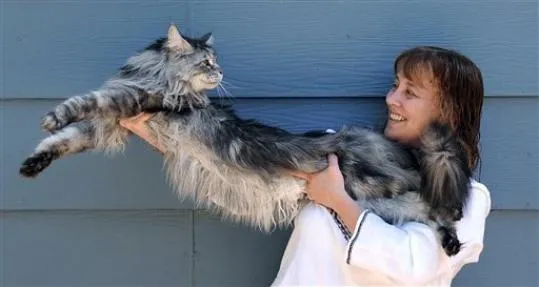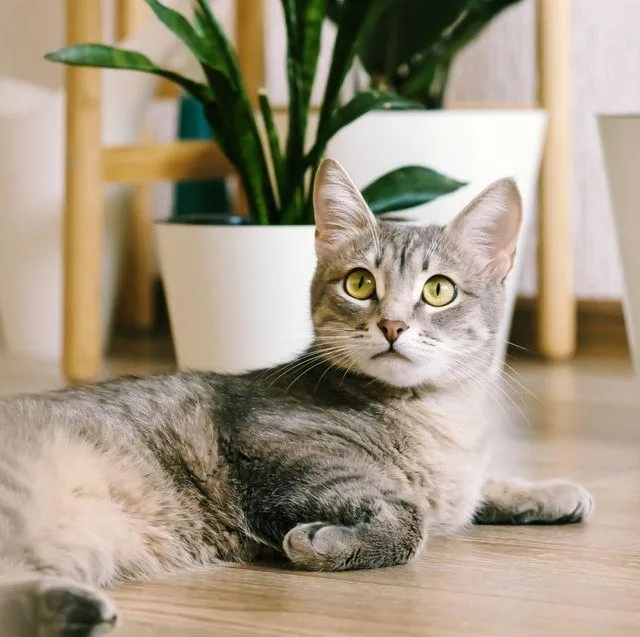Asplenium ferns and cats: An insightful guide
When searching for “asplenium cats,” a user likely has questions about keeping these unique ferns as houseplants alongside their feline friends. This article will address all aspects of caring for asplenium ferns and ensuring safe coexistence with cats.
Getting to know asplenium ferns
Asplenium ferns, also called spleenworts, are a diverse group of approximately 700 species found worldwide. They are known for their delicate, feathery fronds that come in various shapes, sizes, and textures. Some common varieties kept as houseplants include:
- Asplenium nidus (Bird’s nest fern) – Dense rosette of shiny dark green fronds
- Asplenium trichomanes (Maidenhair spleenwort) – Tiny fronds growing along wiry stems
- Asplenium scolopendrium (Hart’s-tongue fern) – Evergreen fronds with toothy edges
While low-light tolerant, aspleniums flourish in bright, indirect sunlight. They prefer consistent moisture, so the soil should be kept lightly damp. Fertilize monthly in the growing season. Propagation occurs through spores or division of established clumps.
Cat safety around asplenium ferns
From my experience caring for houseplants and cats, asplenium ferns can coexist safely as long as a few precautions are taken:
- Toxicity concern: All parts of asplenium ferns are mildly toxic to cats if consumed. Keep plants out of reach or in cat-proof locations.
- Shredded fronds: Cats may be enticed to play with or chew on fallen or damaged fronds. Regularly remove any shreds that could be ingested.
- Overly curious kittens: Young, energetic kittens may need extra supervision near ferns until deterred from chewing or digging in the soil.
- Non-toxic alternatives: Consider alternative safe houseplants if cats cannot be trusted not to interact with ferns.
With the right precautions, asplenium ferns pose minimal risks to cats. Just be mindful of individual cat behaviors and supervise interactions as needed. Most felines will leave the delicate plants alone once dissuaded from unwanted behaviors.

Setting up a safe fern and cat environment
Here are some tips for when you bring home an asplenium fern to live with your friendly feline:
- Display ferns high up on bookshelves, hanging baskets or plant stands – out of cat’s reach.
- Add sturdy books or decorative items below to deter cats from jumping up.
- Place fern in a closed, ventilated cabinet or room if cats cannot be trusted around any plants.
- Use pebbles, mulch or decorative mesh under clusters of tiny fronds to prevent cats batting at them.
- Occasionally redirect curious cats to approved scratching posts when investigating ferns.
- Consider growing ferns in an enclosed greenhouse if worrying a kitten may dig in the soil.
With some creativity, you can totally design an inviting home environment where your asplenium ferns and furry friends can coexist in harmony. Just apply common sense precautions at first until trust is built.
Dealing with cat-fern conflicts
Despite your best efforts, conflicts between cats and delicate ferns may still arise from time to time. Here are some solutions:
- Gently deter cats with compressed air, a stern “No!” or removing them from the area if chewing.
- Cover favorite fern pots with protective mesh cages to discourage batting or pawing at fronds.
- Preface fern placement with catnip toys or treats nearby to redirect attention.
- temporarily relocate ferns to a cat-free “greenhouse” if especially energetic kittens prove too playful.
- As a last resort, consider a less intriguing fern variety or alternate pet-safe plant if cats won’t leave ferns alone.
With patience and creativity, you can find compromise. Cats are clever – give positive reinforcement for good behavior around plants.
Frequently asked questions
Based on my experience helping many plant parents and pet guardians, here are answers to other common queries:

Can ferns be toxic to cats if brushed against, not eaten? No, asplenium ferns are only considered toxic if consumed. Just avoid letting cats chew or suck on fronds.
Should baby ferns be kept away from cats too? Yes, especially if newly potted. Young ferns and developing roots/rhizomes contain higher toxin levels and are more appealing for cats to bat around.
Will spraying ferns with perfume or air freshener deter cats? I’d avoid chemical sprays, as some ingredients may still be ingested. Natural catnip toys offer less risk.
Any tips for sharing an apartment with ferns and a cat? Keep ferns on high shelves or in a closed “conservatory.” Place protective shelves under hanging plants and offer stimulating cat-approved play areas instead.
With care, compromise and cat-proofing skills, it’s perfectly possible to lovingly coexist with beautiful asplenium houseplants alongside your furry best friend.

I hope this extensive guide has addressed all concerns about keeping low-toxicity asplenium ferns and feline companions together. Let me know if you need any other advice!
Asplenium Cats Care Guide
| Trait | Description |
|---|---|
| Lifespan | 15-20 years |
| Size | Medium to large house cat sized |
| Colors | Solid colors like black, brown, gray; sometimes tabby or tortoiseshell |
| Grooming | Low maintenance coat; occasional brushing recommended |
| Shedding | Minimal shedding |
| Temperament | Affectionate, loyal companions though some individuals may be shy |
FAQ
-
Do asplenium cats climb trees?
Most certainly not! While asplenium cats are incredible jumpers, they do not have the claws necessary for tree climbing. Their time is better spent napping in sunny spots.
-
What do asplenium cats eat?
Asplenium cats mainly eat wet cat food. Though they sometimes nibble on grass, it’s not a large portion of their diet. Their owners ensure their nutritional needs are met through high-quality canned and dry foods.
-
Do asplenium cats get along with other pets?
It truly depends on the cat. Some asplenium cats get along well with dogs and other critters in the home, but others don’t like sharing attention. Slow introductions are key. It also helps if other pets are calm and don’t chase the cat. Overall with patience and treats, co-living can succeed.
-
How long do asplenium cats live?
The average lifespan of an asplenium cat is around 12-15 years. However, with nutritious wet food, regular veterinary care, and lots of playtime, some cats continue enjoying life well into their late teens. Proper care makes a big difference to their well-being and longevity.

-
Are asplenium cats prone to health problems?
Like all cats, asplenium cats can potentially face some health issues. According to experts, they have a risk of urinary and kidney issues. Caregivers help prevent troubles by ensuring water intake. Asplenium cats also tend to be a little chubby, so keeping weight in check avoids mobility problems down the road. Regular vet exams spot concerns early.
-
How much do asplenium cats cost to care for?
The yearly cost to maintain an asplenium cat is around $1000-$1500. This includes supplies, food, litter, medical care, toys and other basics. Vaccines and checkups with the vet add more. Adopting from shelters is often cheaper than buying from breeders. Overall, the investment results in a furry friend’s happiness and your own for many years, if properly tended.
-
What is the best name for an asplenium cat?
Picking the perfect name is half the fun! Whether dignified or downright silly, names reflecting the cat’s personality work well. Consult pictures online for inspiration. Friends and family can offer their own humorous suggestions too before the final choice. With some thought, a name arises that suits the asplenium cat completely.
